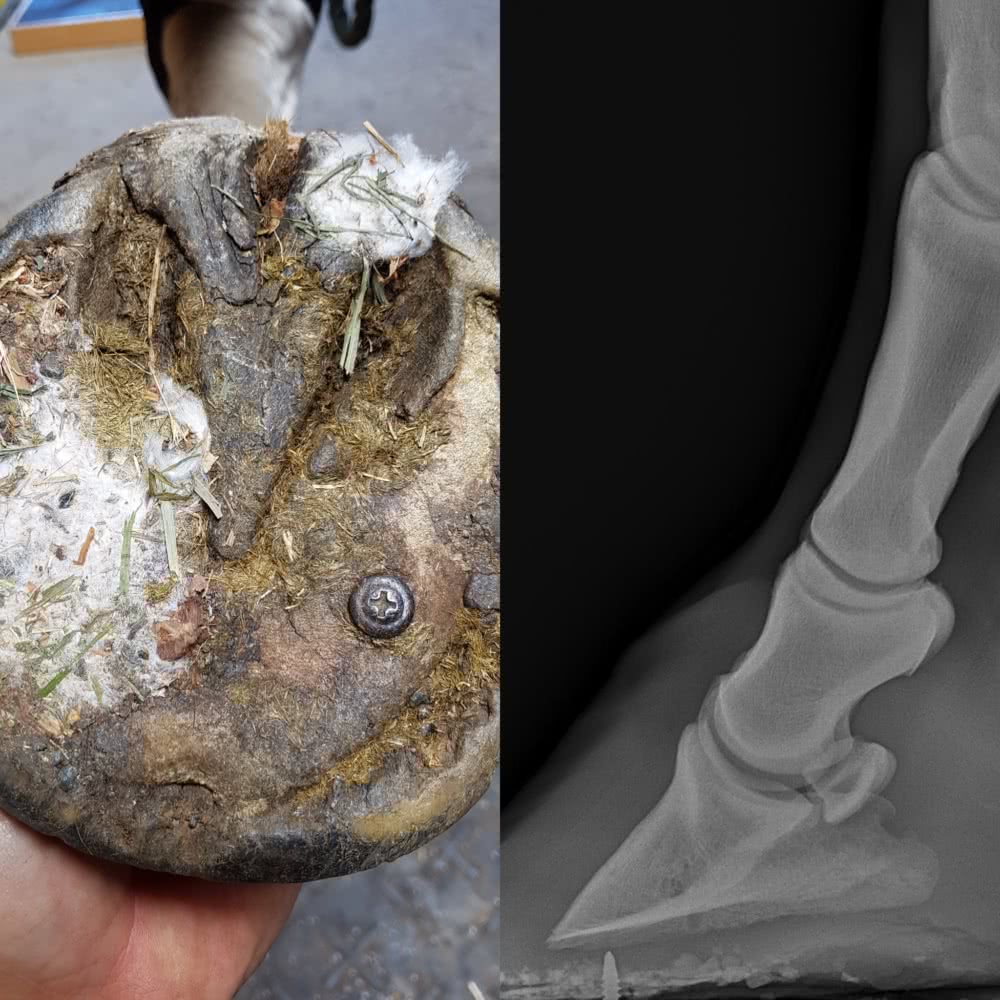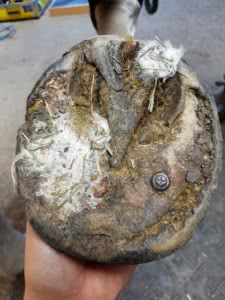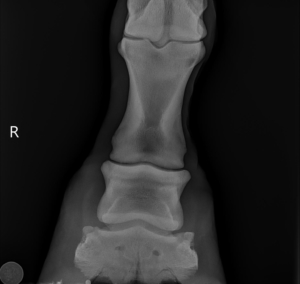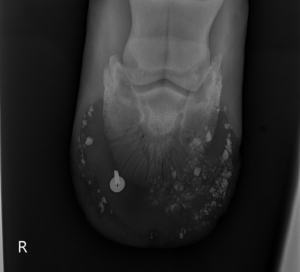Josie’s owner noticed that her horse was limping in her paddock, so after diligently searching the sore leg, she picked up the foot and noticed the head of a screw protruding from the bottom of her foot. Immediately, the owner gave us a call and asked what to do next.
When a horse has a nail or screw implanted in their hoof, we ask the owner to LEAVE THE NAIL IN there and call us instead. This will enable us to use radiographs to assess the exact location of the nail, its length, shape and proximity to important structures. Nails and screws can bend at unexpected angles as it travels into the tissues, which makes it almost impossible to estimate its location without radiographs and can cause additional trauma to the foot when trying to remove it. When the nail or screw is left in the foot, it is visible on x-ray, which will allow the veterinarian to determine what structures have been penetrated, and make a plan for the most appropriate treatment. If it has pierced the navicular bursa or other synovial structures such as the tendon sheath or coffin joint, infection can be life-threatening and may require surgery.
Luckily, in Josie’s case, radiographs showed that the screw was short and did not come into contact with any important structures within the hoof capsule. The screw was removed and the owner soaked the foot in Epsom salts and bandaged daily. Her comfort level has been managed with anti-inflammatories and she is expected to make a full recovery!
Remember to LEAVE THE NAIL IN PLACE until your veterinarian can come and take a look!
- Ouch! Hard to tell how deep it goes.
- Can you spot the screw?
- Look how close the screw is to important structures in the foot!
- So close!





